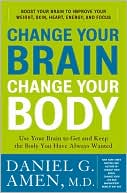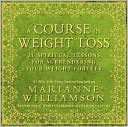Every Patient Tells a Story: Medical Mysteries and the Art of Diagnosis
A healthy young man suddenly loses his memory-unable to remember the events of each passing hour. Two patients, diagnosed with Lyme disease, improve after antibiotic treatment-only to have their symptoms mysteriously return. A young woman lies dying in the ICU-bleeding, jaundiced, incoherent-and none of her doctors know what is killing her. In Every Patient Tells a Story, Dr. Lisa Sanders takes us to the bedside to witness the process of solving these and other diagnostic dilemmas, providing...
Search in google:
A riveting exploration of the most difficult and important part of what doctors do, by Yale School of Medicine physician Dr. Lisa Sanders, author of the monthly New York Times Magazine column "Diagnosis," the inspiration for the hit Fox TV series House, M.D. "The experience of being ill can be like waking up in a foreign country. Life, as you formerly knew it, is on hold while you travel through this other world as unknown as it is unexpected. When I see patients in the hospital or in my office who are suddenly, surprisingly ill, what they really want to know is, ‘What is wrong with me?’ They want a road map that will help them manage their new surroundings. The ability to give this unnerving and unfamiliar place a name, to know it–on some level–restores a measure of control, independent of whether or not that diagnosis comes attached to a cure. Because, even today, a diagnosis is frequently all a good doctor has to offer."A healthy young man suddenly loses his memory–making him unable to remember the events of each passing hour. Two patients diagnosed with Lyme disease improve after antibiotic treatment–only to have their symptoms mysteriously return. A young woman lies dying in the ICU–bleeding, jaundiced, incoherent–and none of her doctors know what is killing her. In Every Patient Tells a Story, Dr. Lisa Sanders takes us bedside to witness the process of solving these and other diagnostic dilemmas, providing a firsthand account of the expertise and intuition that lead a doctor to make the right diagnosis.Never in human history have doctors had the knowledge, the tools, and the skills that they have today to diagnose illness and disease. And yet mistakes are made, diagnoses missed, symptoms or tests misunderstood. In this high-tech world of modern medicine, Sanders shows us that knowledge, while essential, is not sufficient to unravel the complexities of illness. She presents an unflinching look inside the detective story that marks nearly every illness–the diagnosis–revealing the combination of uncertainty and intrigue that doctors face when confronting patients who are sick or dying. Through dramatic stories of patients with baffling symptoms, Sanders portrays the absolute necessity and surprising difficulties of getting the patient’s story, the challenges of the physical exam, the pitfalls of doctor-to-doctor communication, the vagaries of tests, and the near calamity of diagnostic errors. In Every Patient Tells a Story, Dr. Sanders chronicles the real-life drama of doctors solving these difficult medical mysteries that not only illustrate the art and science of diagnosis, but often save the patients’ lives. Publishers Weekly In her first book, internist and New York Times columnist Sanders discusses how doctors deal with diagnostic dilemmas. Unlike Berton Roueché in his books of medical puzzles, Sanders not only collects difficult cases, she reflects on what each means for both patient and struggling physician. A man arrives at the hospital, delirious, his kidneys failing. Batteries of tests are unrevealing, but he quickly recovers after a resident extracts two quarts of urine. An abdominal exam would have detected the patient's obstructed, grossly swollen bladder. The author then ponders the neglect of the physical exam, by today's physicians, enamored with high-tech tests that sometimes reveal less than a simple exam. Another patient, frustrated at her doctor's failure to diagnose her fever and rash, googles her symptoms and finds the correct answer. Sanders uses this case to explain how computers can help in diagnoses (Google is not bad, she says, but better programs exist). Readers who enjoy dramatic stories of doctors fighting disease will get their fill, and they will also encounter thoughtful essays on how doctors think and go about their work, and how they might do it better. (Apr. 14)Copyright © Reed Business Information, a division of Reed Elsevier Inc. All rights reserved.
Introduction: Every Patient’s Nightmare\ Barbara Lessing stared out the window at the snowy field behind the hospital. The afternoon sky was dark with yet more snow to come. She looked at the slender figure in the bed. Her daughter, Crystal, barely twenty-two years old and healthy her entire life, was now–somehow–dying. The young woman had been in the Nassau University Medical Center ICU for two days; she’d been seen by a dozen doctors and had scores of tests, yet no one seemed to have the slightest idea of just what was killing her.\ It all started at the dentist’s office. Crystal had had a couple of impacted wisdom teeth taken out the month before. But even after the teeth were gone, the pain persisted. She’d called her mother halfway across the state just about every day to complain. “Call your dentist,” she’d urged her daughter. And she had. Finally.\ The dentist gave her a week’s worth of antibiotics and then another. After that her mouth felt better–but she didn’t. She was tired. Achy. For the next week she’d felt like she was coming down with something. Then the bloody diarrhea started. And then the fevers. Why didn’t you go to the doctor sooner? the trim middle-aged woman scolded her daughter silently.\ Barbara had gotten a call from a doctor in the emergency room of this suburban hospital the night before. Her daughter was ill, he told her. Deathly ill. She drove to Syracuse, caught the next flight to New York City, and drove to the sprawling academic medical center on Long Island. In the ICU, Dr. Daniel Wagoner, a resident in his second year of training, ushered her in to see her daughter. Crystal was asleep, her dark curly hair a tangled mat on the pillow. And she looked very thin. But most terrifying of all–she was yellow. Highlighter yellow.\ Wagoner could feel his heart racing as he stood looking at this jaundiced wisp of a girl lying motionless on the bed. The bright unnatural yellow of her skin was shiny with sweat. She had a fever of nearly 103°. Her pulse was rapid but barely palpable and she was breathing much faster than normal despite the oxygen piped into her nose. She slept most of the time now and when awake she was often confused about where she was and how she had gotten there.\ To a doctor, nothing is more terrifying than a patient who is dying before your eyes. Death is part of the regular routine of the ICU. It can be a welcome relief to the patient, or to his family. Even a doctor may accept it for a patient whose life can be prolonged no longer. But not for a young girl who was healthy just weeks ago. These doctors had done everything they could think of but still there was a fear–a reasonable fear–that they’d missed some clue that could mean the difference between life and death for this young woman. She shouldn’t die, but the young resident and all the doctors caring for her knew that she might.\ Crystal’s thin chart was filled with numbers that testified to how very ill she was. Wagoner had been through the chart a dozen times. Virtually every test they’d run was abnormal. Her white blood cell count was very high, suggesting an infection. And her red blood cell count was low–she had barely half the amount of blood she should have. She’d gotten a transfusion in the emergency room and another after she was moved to the ICU, but her blood count never budged. Her kidneys weren’t working. Her clotting system wasn’t either. Her yellow skin was covered in bruises and her urine was stained deep red.\ Sometimes, if you just work hard enough to keep a patient alive–to keep the blood circulating, the lungs oxygenating, the blood pressure high enough–the body will be able to survive even a vicious illness. These are the miracles brought by technological advances. Sometimes, but not this time. The ICU team gave Crystal bag after bag of blood; they did their best to shore up her damaged clotting system; she got pressers (medications designed to increase blood pressure) and fluids to help her kidneys. She was on several broad-spectrum antibiotics. And yet none of that was enough. She needed a diagnosis. Indeed, she was dying for a diagnosis.\ This book is about the process of making that diagnosis, making any diagnosis. So often this crucial linchpin of medicine goes unnoticed and undescribed, yet it is often the most difficult and most important component of what physicians do. As pervasive as medicine has become in modern life, this process remains mostly hidden, often misunderstood, and sometimes mistrusted. In movies and novels it’s usually the one-liner that separates the fascinating symptoms from the initiation of the life-saving therapy. On television it’s the contemporary version of Dr. McCoy’s (Star Trek) magic diagnostic device (his tricorder) that sees all, tells all. But in real life, the story of making a diagnosis is the most complex and exciting story that doctors tell.\ And these are stories that doctors tell. Just as Sherlock Holmes or Nick Charles (the hero of the Thin Man mysteries) or Gil Grissom (CSI ) delights in explaining the crime to victims and colleagues, doctors take pleasure in recounting the completed story of their complex diagnoses, stories where every strange symptom and unexpected finding, every mystifying twist and nearly overlooked clue, finally fit together just right and the diagnosis is revealed.\ In this book I’ll take you into those conversations and onto the front lines where these modern medical mysteries are solved–or sometimes not.\ Just a hundred years ago, journalist and acerbic social critic Ambrose Bierce defined the word “diagnosis” in his Devil’s Dictionary as “A physician’s forecast of disease by [taking] the patient’s pulse and purse.” And that was true for most of human history. Until very recently, diagnosis was much more art than science.\ But since Ambrose Bierce wielded his rapier pen, there has been a revolution in our ability to identify the cause of symptoms and understand the pathology behind them. In the era in which Bierce wrote, Sir William Osler, considered by many to be the father of American medicine, was able to write a comprehensive summary of all the known diseases in his 1,100-page masterwork, The Principles and Practice of Medicine. These days each tiny sub-branch of medicine could provide as many pages on its super-specialized knowledge alone.\ At the birth of medicine, millennia ago, diagnosis (the identification of the patient’s disease) and prognosis (the understanding of the disease’s likely course and outcome) were the most effective tools a doctor brought to the patient’s bedside. But beyond that, little could be done to either confirm a diagnosis or alter the course of the disease. Because of this impotence in the face of illness, the consequences of an incorrect diagnosis were minimal. The true cause of the illness was often buried with the patient.\ In more recent history, medicine has developed technologies that have transformed our ability to identify and then treat disease. The physical exam–invented primarily in the nineteenth century–was the starting point. The indirect evidence provided by touching, listening to, and seeing the body hinted at the disease hidden under the skin. Then the X-ray, developed at the start of the twentieth century, gave doctors the power to see what they had previously only imagined. That first look through the skin, into the inner structures of the living body, laid the groundwork for the computerized axial tomography (CT) scan in the 1970s and magnetic resonance imaging (MRI) in the 1990s. Blood tests have exploded in number and accuracy, providing doctors with tools to help make a definitive diagnosis in an entire alphabet of diseases from anemias to zoonoses.\ Better diagnosis led to better therapies. For centuries, physicians had little more than compassion with which to help patients through their illnesses. The development of the randomized controlled trial and other statistical tools made it possible to distinguish between therapies that worked and those that had little to offer beyond the body’s own recuperative powers. Medicine entered the twenty-first century stocked with a pharmacopeia of potent and effective tools to treat a broad range of diseases.\ Much of the research of the past few decades has examined which therapies to use and how to use them. Which medication, what dose, for how long? Which procedure? What’s the benefit? These are all questions commonly asked and that can now be regularly and reliably answered. Treatment guidelines for many diseases are published, available, and regularly used. And despite concerns and lamentations about “cookbook medicine,” these guidelines, based on a rapidly growing foundation of evidence, have saved lives. These forms of evidence-based medicine allow patients to benefit from the thoughtful application of what’s been shown to be the most effective therapy.\ But effective therapy depends on accurate diagnosis. We now have at our disposal a wide range of tools–new and old–with which we might now make a timely and accurate diagnosis. And as treatment becomes more standardized, the most complex and important decision making will take place at the level of the diagnosis.\ Often the diagnosis is straightforward. The patient’s story and exam suggest a likely suspect and the technology of diagnosis rapidly confirms the hunch. An elderly man with a fever and a cough has an X-ray revealing a raging pneumonia. A man in his fifties has chest pain that radiates down his left arm and up to his jaw, and an EKG (electrocardiogram) or blood test bears out the suspicion that he is having a heart attack. A teenage girl on the birth control pill comes in complaining of shortness of breath and a swollen leg, and a CT scan proves the presence of a massive pulmonary embolus. This is the bread and butter of medical diagnosis–cases where cause and effect tie neatly together and the doctor can almost immediately explain to patient and family whodunit, how, and sometimes even why.\ But then there are the other cases: patients with complicated stories or medical histories; cases where the symptoms are less suggestive, the physical exam unrevealing, the tests misleading. Cases in which the narrative of disease strays off the expected path, where the usual suspects all seem to have alibis, and the diagnosis is elusive. For these, the doctor must don her deerstalker cap and unravel the mystery. It is in these instances where medicine can rise once again to the level of an art and the doctor-detective must pick apart the tangled strands of illness, understand which questions to ask, recognize the subtle physical findings, and identify which tests might lead, finally, to the right diagnosis.
Author's Note ixIntroduction: Every Patient's Nightmare xiPart 1 Every Patient Tells a Story1 The Facts, and What Lies Beyond 32 The Stories They Tell 22Part 2 High Touch3 A Vanishing Art 394 What Only the Exam Can Show 535 Seeing Is Believing 776 The Healing Touch 1097 The Heart of the Matter 129Part 3 High Tech8 Testing Troubles 167Part 4 Limits of the Medical Mind9 Sick Thinking 19310 Digital Diagnosis 216Afterword: The Final Diagnosis 239Acknowledgments 253Notes 257Index 271
\ From Barnes & NobleMedical diagnosis is the only form of forensics that none of us can ultimately avoid. As New York Times columnist Lisa Sanders shows in this book, correctly identifying the causes of maladies can be simple, even intuitive, or it can involve advanced tests and intricate cogitations that would boggle the mind of even a real-life Dr. Gregory House. Every Patient Tells a Story approaches diagnosis as a human pursuit, not as a chilling empirical procedure. Her stories are compelling, diverse, and often surprising. A reassuring look at making us well.\ \ \ \ \ Publishers WeeklyIn her first book, internist and New York Times columnist Sanders discusses how doctors deal with diagnostic dilemmas. Unlike Berton Roueché in his books of medical puzzles, Sanders not only collects difficult cases, she reflects on what each means for both patient and struggling physician. A man arrives at the hospital, delirious, his kidneys failing. Batteries of tests are unrevealing, but he quickly recovers after a resident extracts two quarts of urine. An abdominal exam would have detected the patient's obstructed, grossly swollen bladder. The author then ponders the neglect of the physical exam, by today's physicians, enamored with high-tech tests that sometimes reveal less than a simple exam. Another patient, frustrated at her doctor's failure to diagnose her fever and rash, googles her symptoms and finds the correct answer. Sanders uses this case to explain how computers can help in diagnoses (Google is not bad, she says, but better programs exist). Readers who enjoy dramatic stories of doctors fighting disease will get their fill, and they will also encounter thoughtful essays on how doctors think and go about their work, and how they might do it better. (Apr. 14)\ Copyright © Reed Business Information, a division of Reed Elsevier Inc. All rights reserved.\ \ \ Library JournalSanders, a former journalist who is now a practicing internist and faculty member at Yale University's School of Medicine, writes a regular column for the New York Times Magazine featuring puzzling medical diagnoses. She has, however, a far wider audience as the inspiration and consulting producer for the Fox TV series House. A collection of her Times Magazine columns, Diagnosis reads like a season of House, minus quirky actor Hugh Laurie, but these accounts of anonymous patients with complicated symptoms and doctors demonstrating their diagnostic prowess are riveting nonetheless. Like heroes of detective fiction, the skilled physicians here bring a combination of exceptional knowledge, intuition, and occasional luck to solve mysteries and, often, save lives. Readers will enjoy the unfolding conundrums, but, perhaps more important, they will come away with a new appreciation for the enormous complexity of the human body and the doctors who face its challenges. Fascinating and skillfully written; highly recommended for health sciences and public libraries. [See Prepub Alert, LJ10/1/08.]\ —Kathy Arsenault\ \ \ \ \ \ Kirkus ReviewsA doctor's insightful reflections on the disconnect between how physicians should practice and how they actually practice. Although she is a consulting producer for the TV show House, Sanders (Medicine/Yale Univ. School of Medicine) admits that movie and TV doctors make diagnoses seemingly by magic or by uncovering a single overlooked clue. Real doctors listen carefully to patients and examine them, a procedure ignored in fiction but also by many of the current generation of doctors who often prefer tests and advanced technology. "Ultimately," she writes, "the primary work of doctors is to treat pain and relieve suffering." Sanders tells the story of one patient who was feverish and clearly suffering from a severe infection, yet massive intravenous antibiotics weren't helping. A doctor noticed that one of the patient's toes looked gangrenous. When it was amputated, the infection vanished. Patients and doctors yearn intensely for a diagnosis-so intensely, in fact, that they may find one that doesn't actually exist. Writes Sanders: "Translating the big, various, complicated, contradictory story of the human being who is sick, into the spare, stripped down, skeletal language of the patient in the bed, and then making that narrative reveal its conclusion-that is the essence of diagnosis." The author also delves into Lyme disease, a tick-born infection that certainly exists but has given rise to a controversial movement in which a small group of patients suffering fatigue, pains, fever and general misery see a small group of doctors who diagnose a chronic Lyme infection that may require a lifetime of treatment. Studies cast doubt on the existence of this ailment, but both patients and doctorsdismiss them, as they dismissed past skepticism of diseases such as the Epstein-Barr virus. Fans of Jerome Groopman and Atul Gawande will appreciate this first collection by another astute observer of the medical profession. Author events in New York and New Haven, Conn. Agent: Gail Ross/Gail Ross Literary Agency\ \








